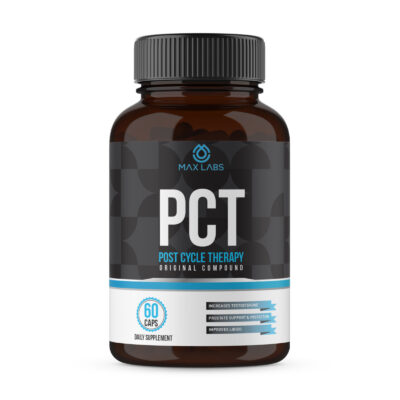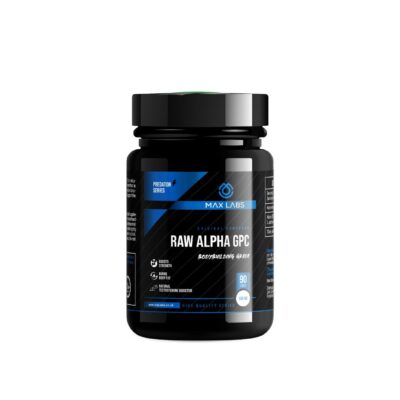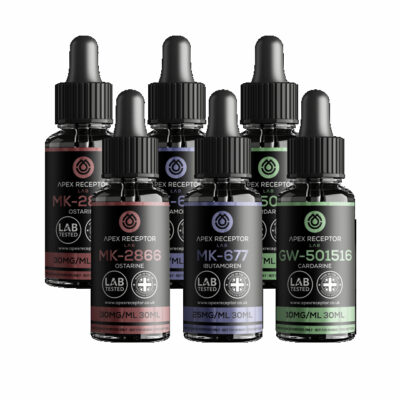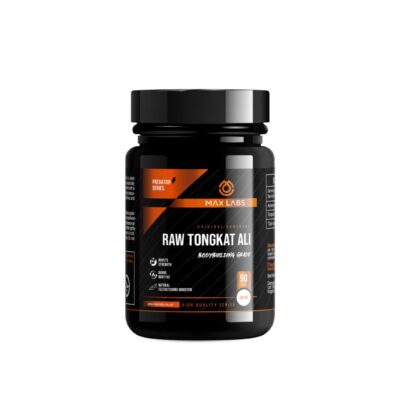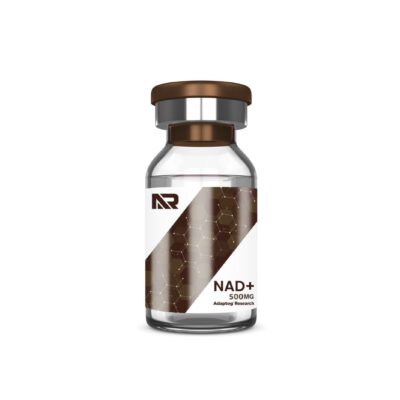NAD (Nicotinamide Adenine Dinucleotide) is a natural compound found in the body. It is an essential cofactor for enzymes, such as sirtuins and PARPs, that are responsible for regulating the body’s response to inflammation and damage. It has gained much popularity in the anti-aging community, and this article will cover the biggest reasons why.
What is NAD+?
NAD+ is the oxidised form of NAD, while NADH is the reduced form. NAD is cycled between its oxidised and reduced forms through redox reactions catalysed by various enzymes.
It can be synthesised from several precursors, including nicotinamide (NAM), nicotinic acid (NA), nicotinamide riboside (NR), and nicotinamide mononucleotide (NMN). Each of these molecules enters different biosynthetic pathways to generate NAD+.
NAD+ and Aging
With people being able to live longer, age-related illnesses are more prevalent now than ever before. Although prolonging the human life span may appear to be a great accomplishment, it is of little value if this extra time is not lived in good health.
There are many measurable markers that we know we can expect to either rise or decline with age. When we know it is to be expected that our inflammatory markers will increase and levels of our sex hormones will decrease as we get older, it is easy to submit to these changes and their negative consequences, unquestioningly. But if we do not so readily accept the inevitable and instead attempt to delay it, perhaps we can maintain the quality of our health for longer.
NAD+ is one of these markers that declines with age, while NADH increases. This imbalance between the oxidised and reduced states of NAD, in particular the decline in NAD+, is strongly linked to an increase in age-related diseases1, making it a subject of great interest amongst anti-aging researchers.
Why Does NAD+ Decline with Age?
The decline in NAD+ can be attributed to several factors, including a decrease in the production of NAD+ itself, an increase in its degradation by enzymes such as CD38, and changes in tissue composition1.
CD38 plays a major role in the decrease in NAD+ that is seen with aging. It becomes more active with advancing age and is upregulated by pro-inflammatory signals from senescent cells and macrophages. With CD38 metabolising NAD+ at an increased rate, cells are unable to synthesise enough NAD+ to keep up with the body’s needs. Sirtuins and PARPs also tend to consume more NAD+ in response to the increased DNA damage and stress that happens as we age. To make matters even worse, NAD+ biosynthesis tends to decrease. This leads to a disruption in DNA repair, mitochondrial function, and metabolic regulation, all of which increase the risk of disease2.
Diseases Linked to NAD+ Deficiency
NAD+ deficiency is associated with several age-related diseases1, such as:
- Alzheimer’s disease
- Parkinson’s disease
- Glaucoma
- Macular degeneration
- Diabetes
- Cardiovascular disease
- Cancer
- Sarcopenia and frailty
- Mitochondrial dysfunction
This link between NAD and aging is a topic that gained traction in the early 2000s. Since then, researchers have investigated methods of increasing NAD+ levels through various means in an attempt to slow the effects of aging and reduce the likelihood of developing age-related diseases.
Increasing NAD+ Through Supplementation
One of the most popularly explored methods is by supplementing with precursors of NAD. Administration of NAD+, either orally or intravenously, has been tested by some research groups.
Benefits Seen in Animals
So far, results have looked promising, with animal models demonstrating:
- Improved glucose and lipid metabolism3
- Weight reduction4
- Reduced diabetes risk5
- Protection from heart and kidney disease6
- Reversed vascular dysfunction7
- Slowed neurodegeneration8
- Rejuvenation of stem cells and increased life span9
Essentially, increasing NAD+ levels helps to improve healthspan and promote longevity.
Benefits Seen in Humans
In humans, studies have been relatively short, so the effects that have been observed so far have been more subtle when compared to animal tests.
Improved Sensitivity to Insulin and Muscle Remodelling
A study involving prediabetic women found that increasing NAD+ through NMN supplementation increased the sensitivity of muscle tissue to insulin, improved insulin signalling and increased muscle remodelling and regeneration10.
Improved Exercise Performance
Since a link between precursor supplementation and an improvement in the exercise performance of mice has been observed, a research group attempted to test whether this benefit could be replicated in humans. The researchers found that the aerobic capacity of amateur runners was increased after 6 weeks of daily NMN supplementation11.
Improved Cardiovascular Health
In another study, NAD+ metabolism was stimulated by supplementing healthy, middle-aged and older subjects with NR. This caused a reduction in systolic blood pressure and a decrease in arterial stiffness, demonstrating a promising improvement in cardiovascular health12.
Other Benefits
A mini review on NAD+ and its potential to improve cardiometabolic health mentions several studies that suggest increasing NAD+ may help improve glucose levels, alter body composition, decrease blood pressure, and reduce inflammation. It also highlighted an important observation, which was that there were significant differences in the improvements seen depending on the gender of the participants. Increasing NAD+ levels were found to offer no benefit in some studies; this is thought to be because the subjects were already healthy or had no NAD+ deficiency13.
Doses Used
By looking at the studies that have been done on humans, we can see that people are typically given doses of anything from 100 to 2000mg of precursor. When NAD+ is given intravenously, it is most commonly given as a dose of 500mg.
Safety
Precursors are generally well tolerated when taken at standard doses. Although some precursors have shown protective effects on the brain after ischemic events, evidence suggests they may sensitise the brain to damage from such events if taken beforehand14. If taken in chronically high doses, NAM may inhibit enzymes responsible for protecting genome integrity and alter gene expression15.
When an NAD+ infusion (500mg) was given to healthy adults, temporary discomfort during the process of infusion was documented. Nausea, headaches, diarrhoea and muscle tightness were experienced, resulting in the need for longer infusion times to reduce side effects16. There have been no recorded cases of people overdosing on NAD+.
Other Ways to Increase NAD+
In addition to supplementation, there are other ways to help increase NAD+ levels as well, such as:
- Regular exercise
- Caloric restriction
- Fasting
- Consuming foods rich in NAD+ precursors
- Consuming polyphenol-rich foods
Conclusion
NAD+ levels naturally drop as we age, which can lead to an increased risk of health problems. Given that NAD+ is an essential cofactor in enzymatic reactions that regulate vital cellular processes, it comes as no surprise that a lack of this compound leads to problems. However, this decline in NAD+ can be mitigated in some cases, potentially improving health, through supplementation and lifestyle changes.
If you’d like to explore NAD+ for research purposes, our high-quality product is available here.
References
- Covarrubias AJ, Perrone R, Grozio A, Verdin E. NAD+ metabolism and its roles in cellular processes during ageing. Nat Rev Mol Cell Biol. 2021;22(2):119-141. doi:10.1038/s41580-020-00313-x
- Strømland Ø, Diab J, Ferrario E, Sverkeli LJ, Ziegler M. The balance between NAD+ biosynthesis and consumption in ageing. Mech Ageing Dev. 2021;199:111569. doi:10.1016/j.mad.2021.111569
- Escande C, Nin V, Price NL, et al. Flavonoid Apigenin Is an Inhibitor of the NAD+ase CD38. Diabetes. 2013;62(4):1084-1093. doi:10.2337/db12-1139
- Roh E, Myoung Kang G, Young Gil S, et al. Effects of Chronic NAD Supplementation on Energy Metabolism and Diurnal Rhythm in Obese Mice. Obesity. 2018;26(9):1448-1456. doi:10.1002/oby.22263
- Yoshino J, Mills KF, Yoon MJ, Imai S ichiro. Nicotinamide Mononucleotide, a Key NAD+ Intermediate, Treats the Pathophysiology of Diet- and Age-Induced Diabetes in Mice. Cell Metab. 2011;14(4):528-536. doi:10.1016/j.cmet.2011.08.014
- Morevati M, Egstrand S, Nordholm A, et al. Effect of NAD+ boosting on kidney ischemia-reperfusion injury. Câmara NOS, ed. PLOS ONE. 2021;16(6):e0252554. doi:10.1371/journal.pone.0252554
- de Picciotto NE, Gano LB, Johnson LC, et al. Nicotinamide mononucleotide supplementation reverses vascular dysfunction and oxidative stress with aging in mice. Aging Cell. 2016;15(3):522-530. doi:10.1111/acel.12461
- Zhao Y, Zhang J, Zheng Y, et al. NAD+ improves cognitive function and reduces neuroinflammation by ameliorating mitochondrial damage and decreasing ROS production in chronic cerebral hypoperfusion models through Sirt1/PGC-1α pathway. J Neuroinflammation. 2021;18(1):207. doi:10.1186/s12974-021-02250-8
- Zhang H, Ryu D, Wu Y, et al. NAD+ repletion improves mitochondrial and stem cell function and enhances life span in mice. Science. 2016;352(6292):1436-1443. doi:10.1126/science.aaf2693
- Yoshino M, Yoshino J, Kayser BD, et al. Nicotinamide mononucleotide increases muscle insulin sensitivity in prediabetic women. Science. 2021;372(6547):1224-1229. doi:10.1126/science.abe9985
- Liao B, Zhao Y, Wang D, Zhang X, Hao X, Hu M. Nicotinamide mononucleotide supplementation enhances aerobic capacity in amateur runners: a randomized, double-blind study. J Int Soc Sports Nutr. 2021;18(1):54. doi:10.1186/s12970-021-00442-4
- Martens CR, Denman BA, Mazzo MR, et al. Chronic nicotinamide riboside supplementation is well-tolerated and elevates NAD+ in healthy middle-aged and older adults. Nat Commun. 2018;9(1):1286. doi:10.1038/s41467-018-03421-7
- Blanco-Vaca F, Rotllan N, Canyelles M, Mauricio D, Escolà-Gil JC, Julve J. NAD+-Increasing Strategies to Improve Cardiometabolic Health? Front Endocrinol. 2022;12:815565. doi:10.3389/fendo.2021.815565
- Qu W, Ralto KM, Qin T, et al. NAD+ precursor nutritional supplements sensitize the brain to future ischemic events. J Cereb Blood Flow Metab Off J Int Soc Cereb Blood Flow Metab. 2023;43(2_suppl):37-48. doi:10.1177/0271678X231156500
- Hwang E, Song S. Possible Adverse Effects of High-Dose Nicotinamide: Mechanisms and Safety Assessment. Biomolecules. 2020;10(5):687. doi:10.3390/biom10050687
- Hawkins J, Idoine R, Kwon J, et al. Randomized, placebo-controlled, pilot clinical study evaluating acute Niagen®+ IV and NAD+ IV in healthy adults. medRxiv. Preprint posted online June 10, 2024:2024.06.06.24308565. doi:10.1101/2024.06.06.24308565


